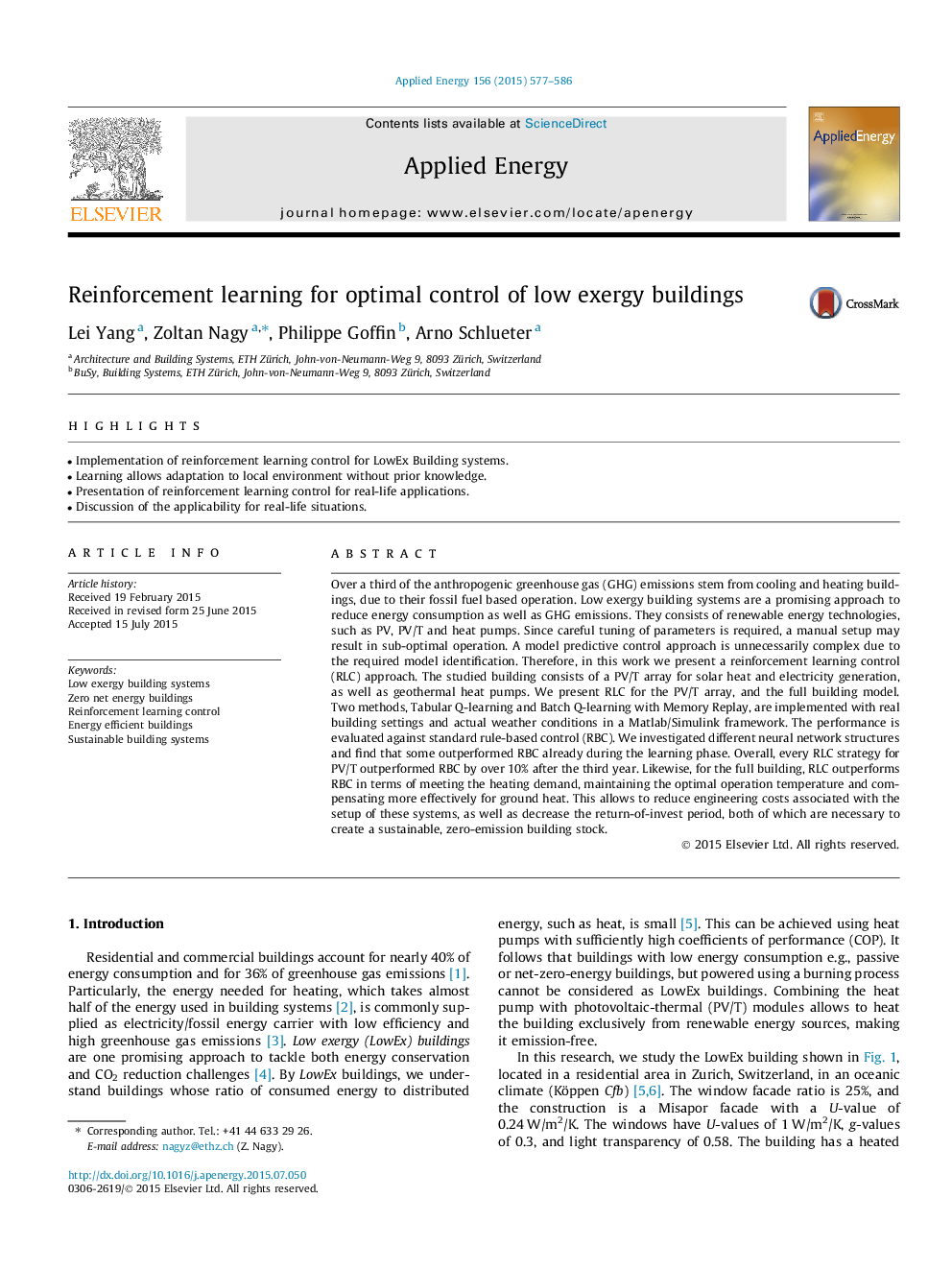| کد مقاله | کد نشریه | سال انتشار | مقاله انگلیسی | نسخه تمام متن |
|---|---|---|---|---|
| 6686313 | 501870 | 2015 | 10 صفحه PDF | دانلود رایگان |
عنوان انگلیسی مقاله ISI
Reinforcement learning for optimal control of low exergy buildings
ترجمه فارسی عنوان
یادگیری تقویتی برای کنترل بهینه از ساختمان های کم اجرایی
دانلود مقاله + سفارش ترجمه
دانلود مقاله ISI انگلیسی
رایگان برای ایرانیان
کلمات کلیدی
سیستم های اگزرژی کم ساختمان انرژی خالص صفر، تقویت کنترل یادگیری، ساختمان های کارآمد انرژی، سیستم های پایدار ساختمان،
موضوعات مرتبط
مهندسی و علوم پایه
مهندسی انرژی
مهندسی انرژی و فناوری های برق
چکیده انگلیسی
Over a third of the anthropogenic greenhouse gas (GHG) emissions stem from cooling and heating buildings, due to their fossil fuel based operation. Low exergy building systems are a promising approach to reduce energy consumption as well as GHG emissions. They consists of renewable energy technologies, such as PV, PV/T and heat pumps. Since careful tuning of parameters is required, a manual setup may result in sub-optimal operation. A model predictive control approach is unnecessarily complex due to the required model identification. Therefore, in this work we present a reinforcement learning control (RLC) approach. The studied building consists of a PV/T array for solar heat and electricity generation, as well as geothermal heat pumps. We present RLC for the PV/T array, and the full building model. Two methods, Tabular Q-learning and Batch Q-learning with Memory Replay, are implemented with real building settings and actual weather conditions in a Matlab/Simulink framework. The performance is evaluated against standard rule-based control (RBC). We investigated different neural network structures and find that some outperformed RBC already during the learning phase. Overall, every RLC strategy for PV/T outperformed RBC by over 10% after the third year. Likewise, for the full building, RLC outperforms RBC in terms of meeting the heating demand, maintaining the optimal operation temperature and compensating more effectively for ground heat. This allows to reduce engineering costs associated with the setup of these systems, as well as decrease the return-of-invest period, both of which are necessary to create a sustainable, zero-emission building stock.
ناشر
Database: Elsevier - ScienceDirect (ساینس دایرکت)
Journal: Applied Energy - Volume 156, 15 October 2015, Pages 577-586
Journal: Applied Energy - Volume 156, 15 October 2015, Pages 577-586
نویسندگان
Lei Yang, Zoltan Nagy, Philippe Goffin, Arno Schlueter,
